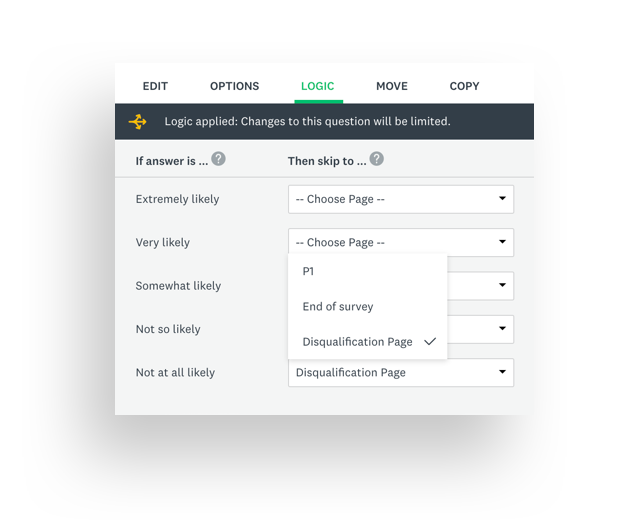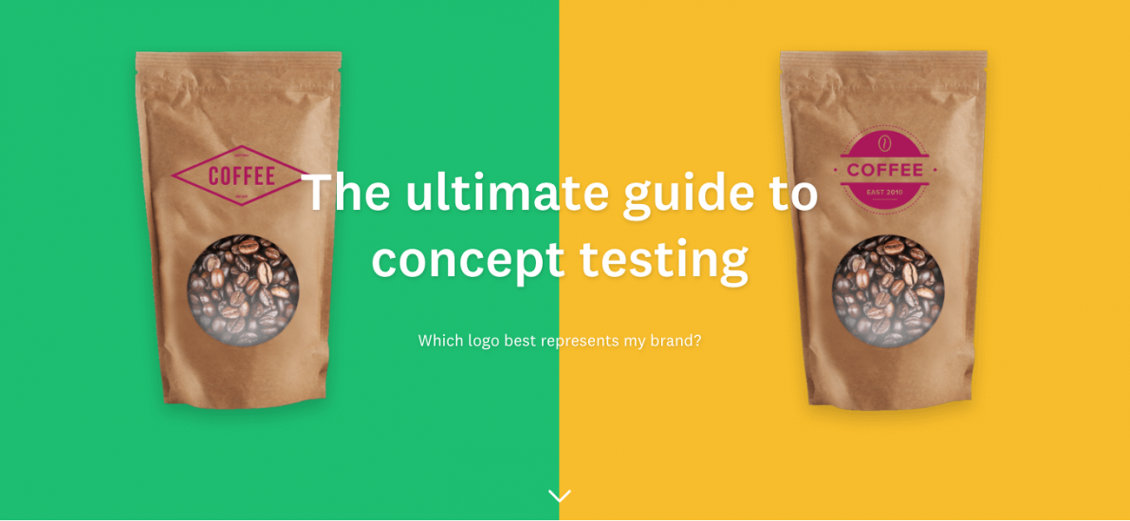What happens after you launch a SurveyMonkey Audience project

Thanks for launching a survey using SurveyMonkey Audience. Here you’ll find everything you can expect now that your project is live and collecting responses.
What’s in this article:
Right after you launch your project
Congratulations! You launched your Audience project, and you’re likely eagerly watching your responses roll in.
Here’s what happens next:
- Right after you check out, you’ll receive a purchase receipt email.
- Our system will find active panelists who meet your targeting criteria and invite them to take your survey.
- You’ll receive an email confirming that your project has launched and you should start seeing responses to your survey within minutes under the Analyze Results tab.
- Note that if your targeting criteria is very narrow, it might take a little longer to start seeing results.
Collecting responses
Once your project is live, we will continue to invite people into your survey until you receive all of the completed responses you ordered. If you haven’t disabled survey response alerts, you’ll be notified daily as responses continue to roll in.

A couple things to keep in mind as we collect your survey responses:
1. If you selected any of our age/gender Census or custom balancing options, our system works to make sure your sample is balanced accordingly. Due to variability in response rates and natural margin of error, we can't guarantee that you'll get the exact number of completed responses that you specified per gender and age. You can expect the final amount to be somewhere within ±5% per gender group and age group. The higher your sample size, the more accurate your balancing will be.

2. If you use a custom screening question and disqualification logic in your survey, we calculate the total number of invites to send based on the qualification rate (aka incidence rate) you specified.

- If you underestimate your qualification rate, you’ll get all of the responses you ordered. We may even over-deliver responses, free of charge.
- If you overestimate your qualification rate, you may not receive all of the completed responses you ordered. To collect more responses, you'll need to launch another Audience project specifying the actual qualification rate.
Closing your survey
Once you receive all of the completed responses you ordered, we’ll automatically close your survey and notify you via email that your project is complete.

If you need to close your survey early for any reason, contact our team and we can help you do this in most cases. It’s possible that if your project fields too quickly, we may not be able to get to it in time.
Paused projects
What are paused projects
Our system continuously monitors your survey’s completion rate (the percentage of people who finish your survey out of those who start your survey). A healthy completion rate is anything over ~85%, because you can always plan for a few respondents to abandon your survey for natural reasons.

A very low completion rate could indicate that something is wrong with the survey or survey targeting, and impacting data quality. Our system will automatically pause projects when the completion rate falls below 60%. This means we will temporarily close your project until you resolve any survey issues before we can launch it again.

Top reasons why projects pause
Here are the top reasons why projects pause:
1. The survey logic is not working as expected. This could mean that the survey logic (disqualification logic, skip logic, page logic, etc.) is broken or looping. Alternatively, respondents may expect to be able to skip over questions they can’t answer, but the appropriate survey logic is missing.
2. The survey targeting doesn’t match the content of the survey. Respondents may drop out of your survey if it isn't relevant to them, so it's important to target the right group of people using either our targeting options or custom screening questions.
3. There are too many open-ended questions in the survey.Our research shows that completion rates are lower both when you start a survey with an open-ended question and when you have more than 5 open-ended questions in the same survey.
4. The survey wording is unclear or repetitive. It’s very important to make sure that grammar, spelling, and phrasing is correct and clear in your survey. If a question is confusing, respondents are likely to give up rather than answer untruthfully.
5. There are structural issues with the survey. For example, page breaks (or lack thereof) could be causing respondent fatigue. We recommend having 5-10 questions per page.
6. Survey questions lack inclusive answer options. When a respondent doesn’t see an answer option that reflects their experiences, they are likely to abandon your survey. Including “None” or “Other” answer options in multiple choice questions give respondents a way to keep going when the question isn’t applicable to them.
7. Survey questions are set up incorrectly. If respondents expect to be able to answer a certain way but are unable to, they’re likely to drop out. A common example is including “Select all that apply” in the question but not allowing multiple selections (i.e. when using a checkboxes question would be a better fit). Or, incorrectly using the forced ranking option in a matrix question (one response per column) when the intention is to have respondents rank every row. These survey question issues limit the respondent's ability to answer honestly and may result in poor data quality.
8. There are image or video issues in the survey. Embedded media can cause problems in a survey if not done right. For example, some video players have privacy settings that make them inaccessible in a survey. Images can be the culprit when they are too blurry, contain tiny type, or are hard to view on mobile devices.
9. The survey takes too long to complete. Complicated matrix questions, ranking questions with >6 answer options, long introductions or consent statements, or sheer survey length can cause respondents to abandon a survey. We recommend keeping the survey to 30 questions or less.
10. The survey was edited while it was in the field. Changes to your survey mid-fielding can affect data quality. If our system detects changes to your survey, we’ll automatically pause your project so our Audience experts can help you get your project back on track.
11. The survey is in the wrong language. International surveys require surveys to be in the native language of respondents in each country.
Conclusion: Keep the respondent experience top of mind when designing your survey. If the respondent is unable to navigate or answer your survey, they’re likely to drop out. If the survey is irrelevant or unengaging, they’re likely to drop out. When respondents enjoy taking your survey, you’re more likely to end up with better data.
What to do if your project pauses
If our system pauses your project, an Audience specialist will email the primary account holder with recommendations for improving your survey. In the meantime, you can start making changes to your survey.
Things to consider when editing your survey:
- Preview and test your survey to see if you can spot the issue.
- Review the reasons why projects pause above and refer to our survey design guidelines to improve your survey design.
- If you just need to edit a couple questions (i.e. add “none” or “other” answer options), you can go ahead and do that in your existing survey.
- Take note of the limitations to what you can edit once a survey is live.
- If you need to delete questions, it’s important to note that deleting a question also deletes the responses to that question.

If you want to “delete” a survey question but still keep the responses you’ve already collected, there’s a way to do it. Create a new survey page with all of the questions you no longer need, and use page logic to skip respondents over that page. Make sure you preview and test your survey to double check that your logic is set up correctly before relaunching your project.
Once you’ve fixed your survey, get back in touch with an Audience specialist so that we can relaunch your survey. Only an Audience specialist will be able to relaunch a paused project.
Important note: To ensure our panelists continue to receive engaging, relevant surveys, we can’t relaunch projects that pause more than once.
Avoiding paused projects in the future
To avoid any issues with your Audience projects in the future, be sure to follow our survey design guidelines when creating your survey.
For any future projects, please feel free to contact us. Our Audience experts would be happy to review your project prior to launch.
How we can help
If something goes wrong, we’ve got a team of Audience experts ready to help you out.

Here are the kinds of things we can help you with:
- Using the Audience product.
- Finding the right people to take your survey.
- Billing and invoicing.
- Monitoring your survey in the field.
- Troubleshooting issues with your project.
- Planning your next project.
- And more!
It may be DIY, but you're not alone!
Our Audience experts are here to help get your project off the ground.
Additional resources
SurveyMonkey Audience Help Center articles:
- Buying responses with SurveyMonkey Audience: A how-to guide for using Audience.
- SurveyMonkey Audience global panel: The countries and languages we offer.
- Qualification rate: An article explaining qualification rate, how it affects your project, and how to estimate it.
- SurveyMonkey Audience for academics: Best practices for academic researchers and students purchasing an Audience.
- Audience Credits: How to purchase Audience Credits if you need corporate invoicing.
Ultimate guides:
Survey design resources:
- Designing a survey for our Audience panel: Survey design requirements and guidelines for a successful Audience project.
- Market research survey templates: From consumer behavior to concept testing to brand tracking, we’ve got lots of templates to get you started.
- A guide to using screening questions in your survey: How to add custom screening questions to your survey to target a specific group of people.
- Survey logic: An index of resources to help you with advanced survey design features from skip logic to randomization, A/B tests, and more.
Data collection resources:
- SurveyMonkey Audience price calculator: Check your project feasibility and get a quote before creating your survey.
- How to identify and reach your target market with surveys: Techniques for understanding your target audience and how to send your survey to the right people.
- Sample size calculator: Calculate the number of people you need to complete your survey given the size of the population you’re sampling.
Data analysis resources:
- Survey data cleaning: 7 things to check before you start your analysis.
- Margin of error calculator: Calculate the error range around your sample results.
- How to use a Top 2 Box Score in your survey analysis: What Top 2 Box Scores are, how to calculate them, and why they make your survey analysis easier.
- 7 filtering techniques for getting better data: A guide outlining the ways you can filter your data to get deeper insights into segments of your sample.
Ready to launch your next market research project?
Preview your targeting options and get a cost estimate now.







